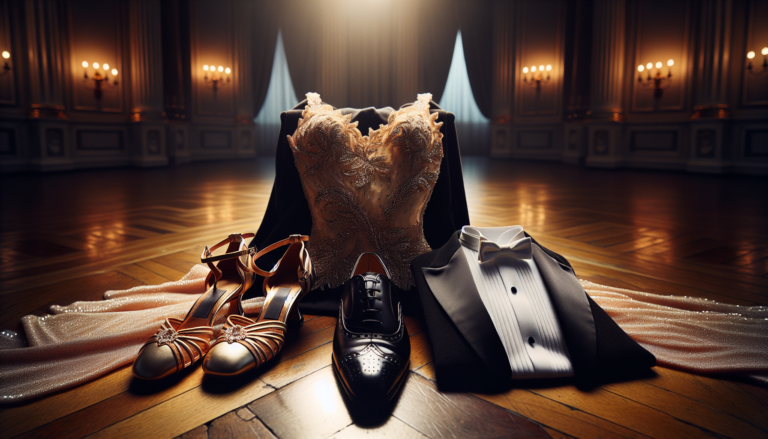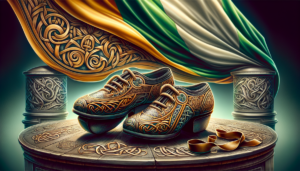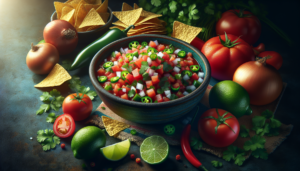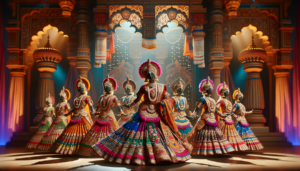Ballroom dance is a captivating and elegant form of dance that has been enjoyed by people around the world for centuries. Whether you’re interested in social dancing or competitive events, ballroom dance offers a wide range of styles and techniques to explore. In this comprehensive guide, we’ll delve into the world of ballroom dance, covering popular styles, basic steps for beginners, helpful tips, and exciting competitions and events to watch or participate in.
Introduction to Ballroom Dance
What is Ballroom Dance?
Ballroom dance encompasses a diverse collection of dance styles performed with a partner, typically to the accompaniment of music. These dances are characterized by their grace, elegance, and precise technique, with each style possessing its own unique history, music, and movements. Ballroom dance is enjoyed both socially and competitively, with events and competitions held around the world.
The term “ballroom dance” refers to the 19 distinct styles recognized by the World Dance Council, which are categorized into four main groups: Latin, Ballroom, Rhythm, and Smooth. Each group features several dances that share similar characteristics and techniques, allowing dancers to specialize or diversify their skills across various styles.
History and Evolution of Ballroom Dance
The origins of ballroom dance can be traced back to the royal courts of Europe in the 16th century, where formal partner dances were a staple of social gatherings and celebrations. As these dances spread across the continent and beyond, they evolved and adapted to local cultures and preferences, giving rise to the diverse range of styles we know today.
In the early 20th century, ballroom dance gained widespread popularity as a social activity and competitive sport. The standardization of dance styles and the establishment of international organizations, such as the World Dance Council, helped to formalize the rules and judging criteria for competitions. Today, ballroom dance continues to thrive, with a vibrant community of dancers, instructors, and enthusiasts around the globe.
Popular Ballroom Dance Styles
Latin Ballroom Dance Styles
Latin ballroom dances are known for their lively, expressive, and often sensual movements. These dances originated in Latin America and have since gained global popularity. The five main Latin ballroom dance styles are:
- Cha Cha: A flirtatious dance characterized by its quick, playful steps and Cuban motion.
- Samba: A high-energy dance inspired by Brazilian Carnival, featuring bouncy movements and rhythmic footwork.
- Rumba: A slow, romantic dance that emphasizes the connection between partners and fluid hip movements.
- Paso Doble: A dramatic dance inspired by Spanish bullfighting, featuring strong, staccato movements and passionate expressions.
- Jive: A fast-paced, energetic dance that incorporates elements of swing and rock and roll, with lots of kicks and spins.
Smooth Ballroom Dance Styles
Smooth ballroom dances are characterized by their elegant, flowing movements and graceful transitions. These dances are typically performed to slower, more melodic music and emphasize the connection between partners. The four main Smooth ballroom dance styles are:
- Waltz: A classic dance known for its distinctive “1-2-3” timing and romantic, sweeping movements.
- Tango: A passionate dance that features sharp, staccato movements and dramatic pauses, reflecting the intensity of the music.
- Foxtrot: A smooth, progressive dance that combines quick and slow steps, allowing for creative interpretation of the music.
- Viennese Waltz: A fast-paced variation of the Waltz, characterized by its continuous turning movements and breathtaking speed.
Rhythm Ballroom Dance Styles
Rhythm ballroom dances, also known as American Rhythm, are a group of lively, energetic dances that blend Latin and Swing influences. These dances are known for their dynamic movements, syncopated rhythms, and playful interactions between partners. The five main Rhythm ballroom dance styles are:
- Cha Cha: Similar to its Latin counterpart, the American Cha Cha features a more relaxed, grounded style.
- Rumba: An intimate dance that emphasizes the connection between partners and fluid hip movements.
- East Coast Swing: A fun, upbeat dance that incorporates elements of Lindy Hop and Jitterbug, with lots of spins and turns.
- Bolero: A slow, romantic dance that combines elements of Rumba and Waltz, featuring sweeping movements and dramatic poses.
- Mambo: A high-energy dance that originated in Cuba, characterized by its lively steps and syncopated rhythms.
Basic Steps for Beginners
Basic Steps in Latin Ballroom Dance
When learning Latin ballroom dances, it’s essential to focus on mastering the basic steps and rhythms before progressing to more advanced techniques. Here are some fundamental steps for beginners:
- Cha Cha: Start with the basic “cha-cha-cha” step, which involves stepping forward, replacing the weight, and taking two quick steps in place.
- Samba: Practice the “samba bounce” by shifting your weight from one foot to the other, creating a bouncy, rhythmic motion.
- Rumba: Learn the “box step,” which involves stepping forward, to the side, back, and to the other side, forming a square pattern.
Basic Steps in Smooth Ballroom Dance
When learning Smooth ballroom dances, focus on developing a strong frame, maintaining balance, and creating smooth, flowing movements. Here are some basic steps for beginners:
- Waltz: Start with the “box step,” which involves stepping forward, to the side, and closing the feet together, then reversing the pattern.
- Foxtrot: Practice the “feather step,” which involves stepping forward, brushing the feet together, and then stepping to the side.
- Tango: Learn the “tango walk,” which involves taking slow, deliberate steps with a slight bend in the knees, maintaining a strong connection with your partner.
Basic Steps in Rhythm Ballroom Dance
When learning Rhythm ballroom dances, focus on developing a strong sense of rhythm, mastering the basic steps, and adding style and flair to your movements. Here are some basic steps for beginners:
- East Coast Swing: Start with the “rock step,” which involves rocking back on one foot and then stepping forward on the other.
- Bolero: Practice the “break step,” which involves stepping forward, replacing the weight, and then taking a slow step to the side.
- Mambo: Learn the “mambo basic,” which involves stepping forward, replacing the weight, and then taking two quick steps in place.
Tips for Beginners
Choosing the Right Dance Shoes
Investing in a pair of quality dance shoes is essential for any beginner ballroom dancer. Dance shoes are specifically designed to provide the necessary support, flexibility, and traction needed for various dance styles. When choosing dance shoes, consider factors such as the type of dance you’ll be focusing on, the fit and comfort of the shoe, and the material and construction quality.
Finding a Dance Partner
While it’s possible to learn and practice ballroom dance on your own, having a partner can greatly enhance your learning experience and enjoyment of the dance. If you don’t have a partner, consider attending social dance events, joining a dance class or club, or connecting with other dancers through online communities. Remember that communication, patience, and a willingness to learn together are key to a successful dance partnership.
Practicing Regularly
To make steady progress in your ballroom dance journey, it’s essential to practice regularly. Set aside dedicated time each week to work on your technique, review the steps you’ve learned, and experiment with new movements and styling. Practice with a partner whenever possible, but also take time to focus on your individual technique and body awareness.
Joining a Dance Class or Club
Joining a dance class or club is an excellent way to learn from experienced instructors, connect with other dancers, and immerse yourself in the ballroom dance community. Look for classes that cater to your skill level and interests, and don’t be afraid to try out different instructors and styles until you find the right fit. Many dance clubs also offer social dance events, workshops, and performance opportunities to help you grow and showcase your skills.
Ballroom Dance Competitions and Events
Major Competitions to Watch
Ballroom dance competitions, also known as DanceSport events, are held at local, national, and international levels, attracting talented dancers from around the world. Two major competitions to watch are:
| Competition | Description |
|---|---|
| Ohio Star Ball | One of the largest and most prestigious ballroom dance competitions in the United States, featuring a wide range of skill levels and dance styles. |
| Michigan Dance Challenge | A popular competition that attracts dancers from across the Midwest, offering both amateur and professional events in various dance styles. |
Participating in Competitions
As you progress in your ballroom dance journey, you may wish to test your skills and compete against other dancers. To prepare for a competition, focus on refining your technique, developing your musicality and expression, and creating a polished performance with your partner. Consider working with a coach or instructor who has experience in competitive dancing to help you achieve your goals.
Remember that competitions are not just about winning, but also about challenging yourself, learning from others, and enjoying the experience of performing. Embrace the opportunity to showcase your hard work and dedication, and celebrate your achievements, no matter the outcome.
Conclusion
The Joy of Ballroom Dance
Ballroom dance is a wonderful way to express yourself, connect with others, and experience the joy of movement. Whether you’re drawn to the elegance of Waltz, the passion of Tango, or the lively energy of Cha Cha, there’s a style and a community waiting to welcome you. Embrace the challenges, savor the triumphs, and let the music guide you as you embark on your ballroom dance journey.
Next Steps for Aspiring Dancers
As you continue to explore the world of ballroom dance, never stop learning, growing, and challenging yourself. Attend workshops and masterclasses to refine your technique, seek out new dance partners and experiences, and consider joining a performance group or competing in events to showcase your skills. Most importantly, remember to have fun, stay passionate, and let your love for dance shine through in every step you take.
#EN#






